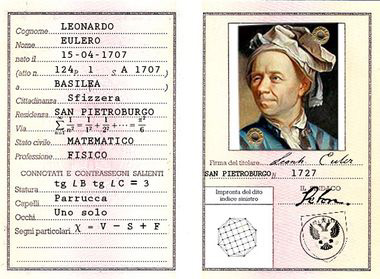
«Ci sono misteri che la mente umana non penetrerà mai. Per convincercene, non dobbiamo fare altro che gettare un'occhiata alle tavole dei numeri primi. Ci accorgeremo che non vi regna né ordine né legge».
Eulero, 1751
Eulero scoprì una legge empirica di distribuzione degli elementi di un sottoinsieme dell'insieme dei numeri primi.
Si consideri la famiglia (finita) di parabole ad un parametro:
Si noti che i valori assunti dal parametro libero q sono numeri primi. Nell'argomento di p(x) passiamo dai reali agli interi naturali:
Eulero verificò che per n=0,...,q-2, l'intero naturale p(n) è un numero primo. Si badi tuttavia che p(n) e p(n+1) non sono successivi. Per fissare le idee, prendiamo q=39. In tal caso, l'equazione precedente restituisce la lista graficata in fig. 1.
«There are mysteries that the human mind will never penetrate. To be convinced of this, all we have to do is glance at the tables of prime numbers. We will realize that neither order nor law reigns there». Euler, 1751
Euler discovered an empirical law of distribution of the elements of a subset of the set of prime numbers.
Consider the (finite) family of one-parameter parabolas
Note that the values assumed by the free parameter q are prime numbers. In the argument of p(x) we pass from the reals to the natural integers.
Euler verified that for n=0,...,q-2, natural integer p(n) is a prime number. Note, however, that p(n) and p(n+1) are not successive. To fix the ideas, let's take q=39. In this case, the the previous equation returns the list graphed in fig. 1.